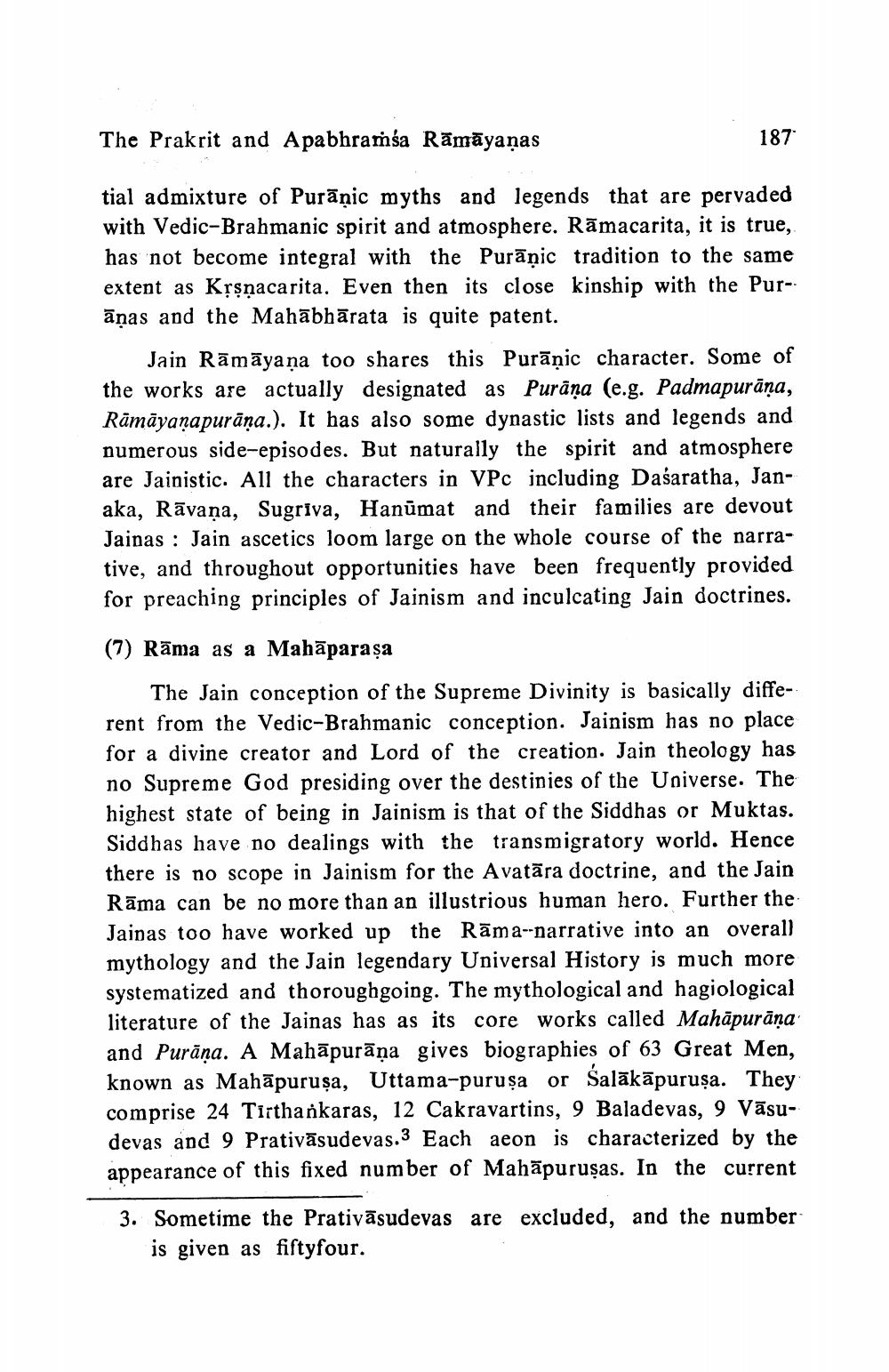________________
The Prakrit and Apabhraíša Rāmāyaṇas
187
tial admixture of Purāņic myths and legends that are pervaded with Vedic-Brahmanic spirit and atmosphere. Rāmacarita, it is true, has not become integral with the Purāṇic tradition to the same extent as Krşņacarita. Even then its close kinship with the Pur-- āṇas and the Mahābhārata is quite patent.
Jain Rāmāyaṇa too shares this Purāņic character. Some of the works are actually designated as Purāņa (e.g. Padmapurāņa,
anapurāna.). It has also some dynastic lists and legends and numerous side-episodes. But naturally the spirit and atmosphere are Jainistic. All the characters in VPc including Dasaratha, Janaka, Rāvaņa, Sugriva, Hanūmat and their families are devout Jainas : Jain ascetics loom large on the whole course of the narrative, and throughout opportunities have been frequently provided for preaching principles of Jainism and inculcating Jain doctrines.
(7) Rāma as a Mahāpara sa
The Jain conception of the Supreme Divinity is basically different from the Vedic-Brahmanic conception. Jainism has no place for a divine creator and Lord of the creation. Jain theology has no Supreme God presiding over the destinies of the Universe. The highest state of being in Jainism is that of the Siddhas or Muktas. Siddhas have no dealings with the transmigratory world. Hence there is no scope in Jainism for the Avatāra doctrine, and the Jain Rāma can be no more than an illustrious human hero. Further the Jainas too have worked up the Rāma-narrative into an overal) mythology and the Jain legendary Universal History is much more systematized and thoroughgoing. The mythological and hagiological literature of the Jainas has as its core works called Mahāpurāņa and Purāņa. A Mahāpurāņa gives biographies of 63 Great Men, known as Mahāpuruşa, Uttama-puruṣa or Salākāpuruşa. They comprise 24 Tirthařkaras, 12 Cakravartins, 9 Baladevas, 9 Vāsudevas and 9 Prativāsudevas.3 Each aeon is characterized by the appearance of this fixed number of Mahāpuruşas. In the current
3. Sometime the Prativāsudevas are excluded, and the number
is given as fiftyfour.




